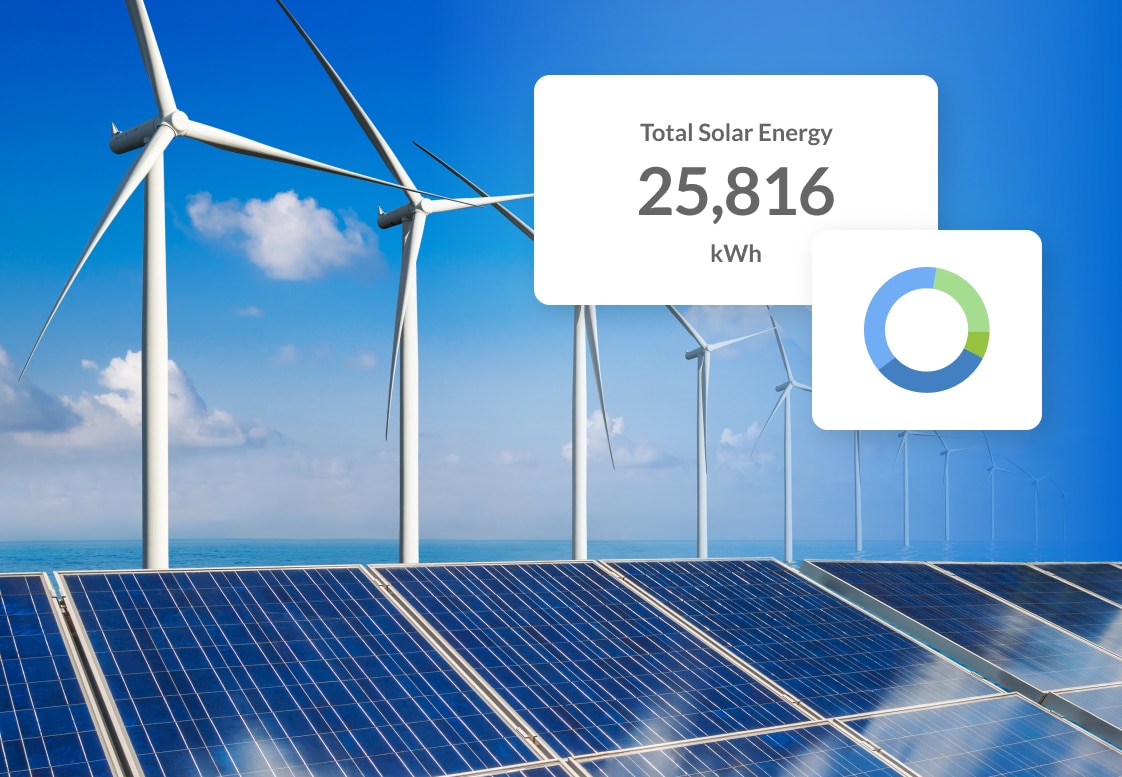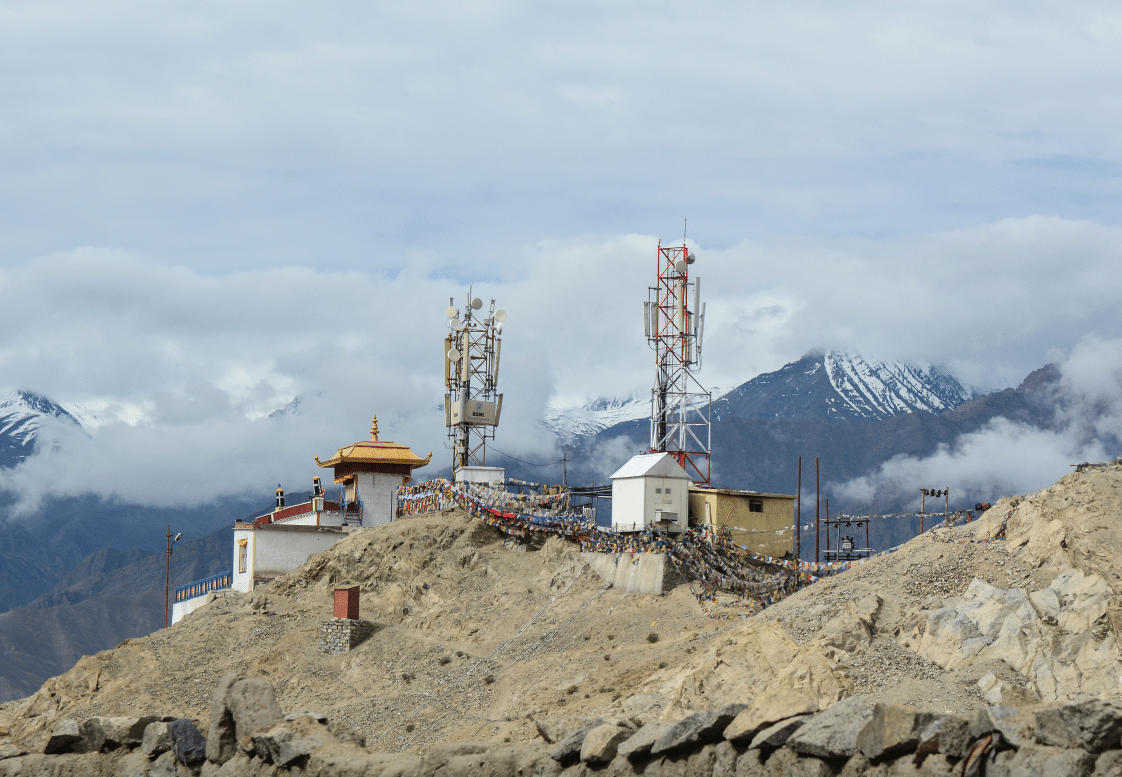
It takes a whole lot of energy to power the world as we know it. Annual energy consumption globally is estimated to be 580 million terajoules – equivalent to 13865 million tons of oil equivalents.
And in 2022, we’ve become more aware of what this is costing the planet.
There’s increased demand as global conflicts are driving up the prices. There’s also a major push towards using renewable energy sources, a change that must be enacted with real urgency.
No business can afford to waste the energy they purchase. Monitoring and optimizing energy efficiency is crucial.
Across the world, business owners are feeling the squeeze from rising energy prices. In the UK, some businesses are seeing their costs jump up by as much as 90%, all while the average commercial facility in the UK wastes 30% of the energy it purchases—which will amount to £33.9 billion uselessly burned off this year.
Studies in the US show comparable rates of inefficient energy usage. When energy costs are putting the financial health of your business in peril, every watt counts.
Before you can figure out the best ways to optimize your energy usage, you must understand where it’s going.
By calculating your energy efficiency, you can find solutions that will lead to greener and more affordable energy usage across your whole enterprise.
Why is energy efficiency so important?
Even for businesses that can bear the impact of rising energy costs, the benefits of calculating and optimizing energy efficiency are significant:
Environmental impact
Scientists have sounded the alarm on global warming for a long time. Still, in recent years the disturbances to our global climate have resulted in extreme weather events that have been impossible to ignore.

Last year $755 billion was invested in global efforts to transition to low-carbon energy usage, with nearly half of that going toward renewable energy.
For businesses looking to do their part through decarbonization, optimizing energy efficiency is one of the most cost-effective ways to go about it.
Operational costs
The only way you’ll know how much money you can save by optimizing your energy efficiency is by calculating the percentage you’re currently wasting.
For the average business, however, a 10 to 15% reduction in operation expenses is feasible, and for businesses in developing countries, the savings can be as high as 50%.
Asset durability
Energy efficiency is often reduced by devices and equipment being left on when not in use, charged while at full battery capacity, or otherwise drawing power from the electrical grid.
Calculating your energy efficiency ratio can bring these issues to light and paint a clearer picture of any oversights or missed opportunities for energy savings in your day-to-day operations.
Reducing needless energy and fuel consumption can also lengthen the lifespan of your fixtures, electronics, and machinery, leading to even greater savings and improving the durability and reliability of your critical assets.
How to calculate energy efficiency
Energy efficiency is a key measure of success for businesses striving toward reduced carbon usage and higher profits.
You can use this formula to figure out where your energy is going, how much is wasted, and how much is ending up where it should.
Energy efficiency formula

First, you need to measure the energy going into the system you’re evaluating, as expressed in watts or joules.
Next, you need to measure the useful energy output of the system, as expressed in the same units of measurement.
Then you take the energy output and divide it by the energy input. This is your energy efficiency ratio. You can multiply it by 100 to express it as a percentage.
Example: An older piece of equipment receives 500 joules of power to produce the equivalent of 100 joules of output. 100/500 = 0.2, or 20% efficiency.
A newer equipment version takes the same 500-joule input to generate 400 joules of productive output. 400/500 = 0.8, or 80% efficiency—much better!
In some cases, the “wasted” energy will result in a byproduct that can be utilized, such as the heat generated by lamps that are primarily designed to illuminate. If you can’t capture that energy, it simply disperses itself and provides no benefit.
How to be more energy efficient in your operations
Regardless of the ups and downs of energy prices, optimizing efficiency is vital in the face of the ongoing climate change crisis.
Customers and employees want to see environmentally-conscious leadership. And companies can meet these expectations by managing their operations and assets in a way that minimizes costs and energy usage and maximizes their potential.
Companies that operate data centers, industrial facilities, telecommunications infrastructure, and other commercial buildings can realize significant benefits in terms of savings and productivity by scaling their energy efficiency initiatives organization-wide.
Here’s how to get started.
1. Create a climate plan
Many companies have committed themselves to the Net Zero plan to reduce emissions.
While this may seem an ambitious goal, it can provide a robust framework for reevaluating how your organization uses energy.

Creating and following a climate plan is the first step toward making meaningful changes.
Begin by assessing your current challenges and opportunities, then look for areas where old and outdated systems or processes may consume more energy than they should.
2. Switch to renewable energy
Renewables were once costly to set up and maintain, which isn’t universally true anymore. Thanks to widespread adoption, renewables are no longer a luxury.
Many renewable energy sources, including wind and solar, have become cheaper to produce than energy produced by burning fossil fuels.
Pairing clean and renewable energy sources with careful usage management is one of the most effective ways to optimize efficiency.
Utilize smart building technologies
Monitoring energy usage and managing it in real time has historically been one of the greatest difficulties in optimizing efficiency, but smart building technology is making it easier than ever.
Smart meters and sensors connected through IoT technology can provide immediate information about usage levels and operational issues, with options to shut functions down, switch from AC to DC power when plugs are overloaded, or take other remote actions as needed.
Smart technology can also optimize the output of lighting, heat pumps, and reflective roofing.
Start monitoring energy usage
The only way to get complete visibility into the efficiency of your energy usage is to monitor it closely.
An overarching view of your assets, old and new, is required to ensure correct and efficient performance.
Your monitoring system should also alert you to unexpected behavior or possible malfunctions so they can be addressed immediately.
How to effectively and easily manage your energy
Usage monitoring is essential for determining your energy efficiency. But it can be incredibly challenging and time-consuming to make accurate calculations by hand when dealing with large amounts of data and multiple worksites.
You need to be able to keep a close eye on things at all times, and sometimes that just isn’t possible when you’re doing things manually.
With Galooli’s energy management platform, you have overarching visibility into your energy assets, including the ones in remote, hard-to-reach locations.
You’ll be able to view your performance history to understand exactly how to maximize each asset’s usage, minimize downtime, and eliminate wasted operational costs—all while improving overall efficiency at the site.
Galooli’s energy asset monitoring solution provides 24/7 monitoring, comprehensive oversight, accessible dashboards, and live alerts to help you get as much power as possible out of the energy you’re paying for. Connect with Galooli to use your energy data to maximize efficiency and lower operational costs.
Connect With Us
operational cost savings & efficiency?



























